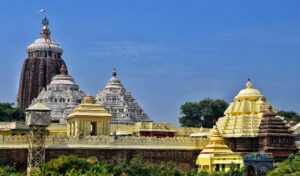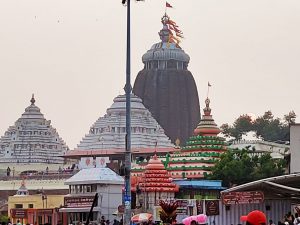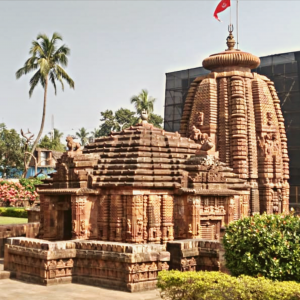Jagannath Temple Puri – A Divine Journey Through One of the Most Sacred Tourist Attractions in Odisha
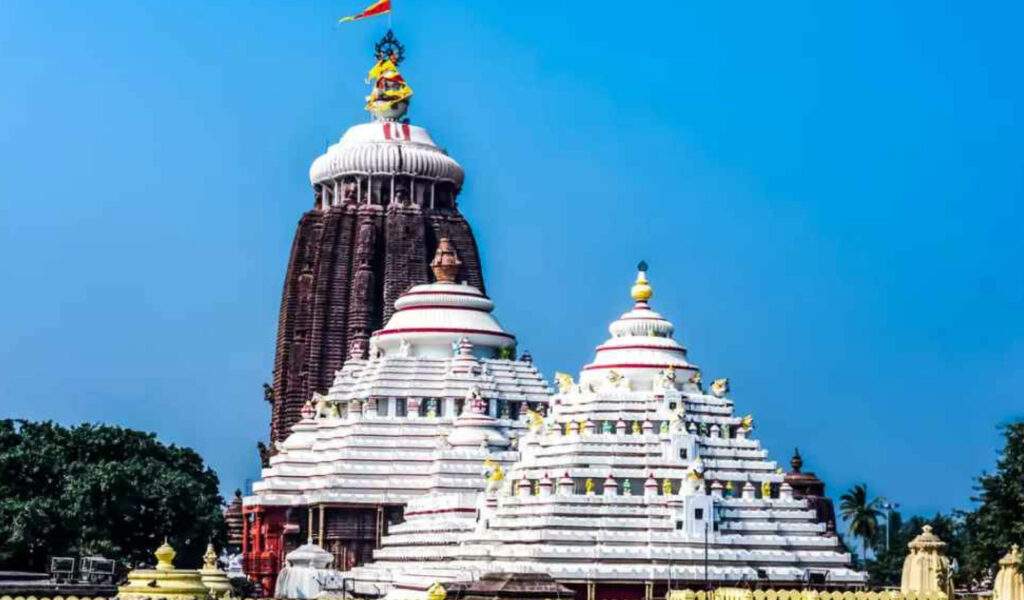
The Jagannath Temple in Puri is not just a temple—it’s an emotion, a symbol of devotion, faith, and the vibrant spiritual heritage of India. Counted among the Char Dham pilgrimage sites, it attracts millions of devotees and travelers from around the world. Dedicated to Lord Jagannath (a form of Lord Vishnu), the temple’s rituals, festivals, and architectural grandeur make it one of the most significant tourist spots in Odisha. Whether you’re a pilgrim or a culture enthusiast, visiting Jagannath Temple is a journey into timeless spirituality and Odia tradition.
Where Is Jagannath Temple? (with GPS Coordinates)
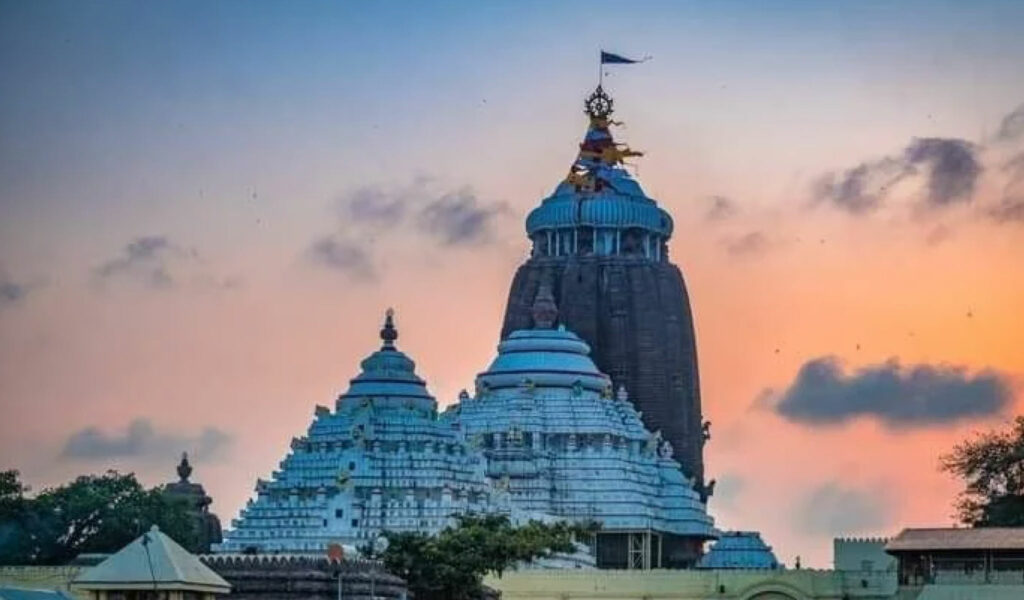
Located in the sacred coastal city of Puri, Odisha, the Jagannath Temple stands majestically on the eastern coast of India, about 60 km from Bhubaneswar.
GPS Coordinates: 19.8048° N, 85.8174° E
Puri lies along the Bay of Bengal and is part of the “Golden Triangle” of Odisha tourism—Bhubaneswar, Konark, and Puri. Its pristine beaches, ancient temples, and cultural depth make it one of the most visited places to visit in Odisha. The temple complex is visible from afar, with its towering spire rising above the skyline, guiding pilgrims toward devotion and divine peace.
Mythological & Historical Significance
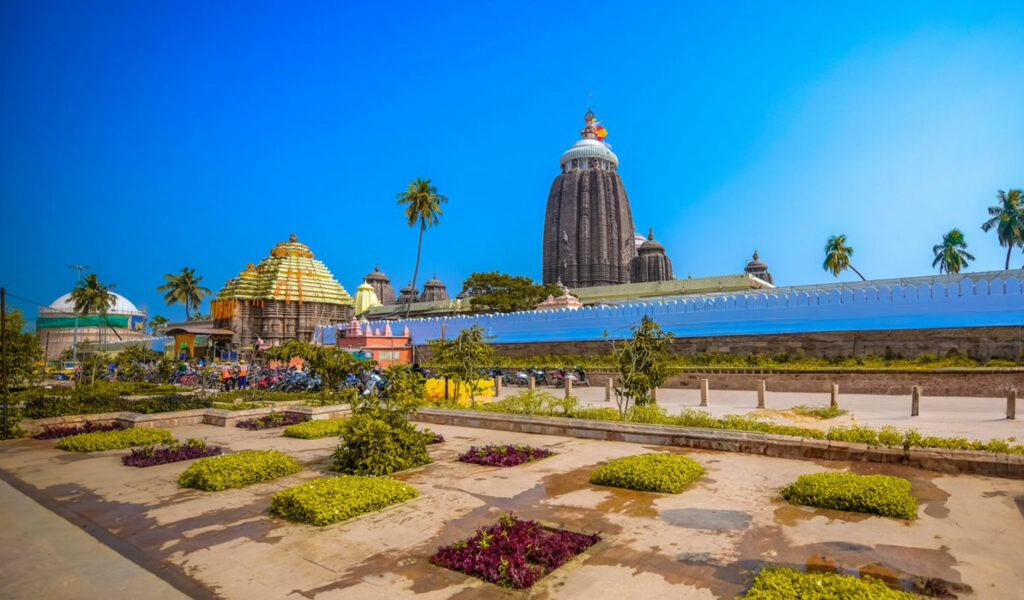
According to legends, the Jagannath Temple is where Lord Vishnu manifests as Jagannath, the “Lord of the Universe,” along with his siblings, Balabhadra and Subhadra. The story traces back to King Indradyumna of Avanti, who was instructed in a dream to build a temple for Vishnu’s wooden form. Lord Vishnu himself is said to have appeared as a carpenter and carved the idols—but disappeared before finishing them. Hence, the idols today appear unfinished, representing the infinite nature of divinity.
Historically, the temple was built in the 12th century by King Anantavarman Chodaganga Deva of the Eastern Ganga dynasty. It has since been a focal point of Odia culture and devotion. Its traditions have influenced art, dance, and literature across eastern India, making it one of the most spiritually powerful tourist attractions in Odisha.
Architecture
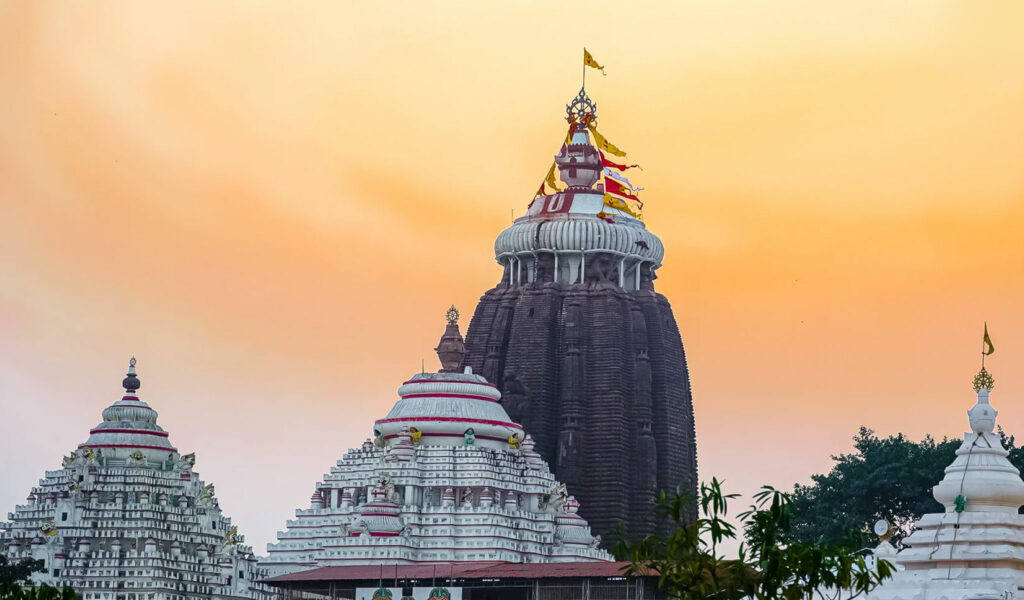
The Jagannath Temple is a masterpiece of Kalinga architecture, built from gleaming white sandstone. Rising nearly 65 meters, its main spire (Shikhar) dominates the skyline of Puri. The temple complex includes several smaller shrines, courtyards, and monumental gates like the Singhadwara (Lion Gate). The temple’s carvings reflect mythological themes, intricate floral motifs, and detailed stone sculptures that exemplify Odisha’s ancient craftsmanship.
The temple kitchen, one of the world’s largest, prepares the famous Mahaprasad—a sacred offering cooked in earthen pots over wood fire. It’s said that the food never goes to waste, no matter how many devotees arrive, reinforcing the temple’s aura of divine mystery.
What You’ll See & Do at Jagannath Temple
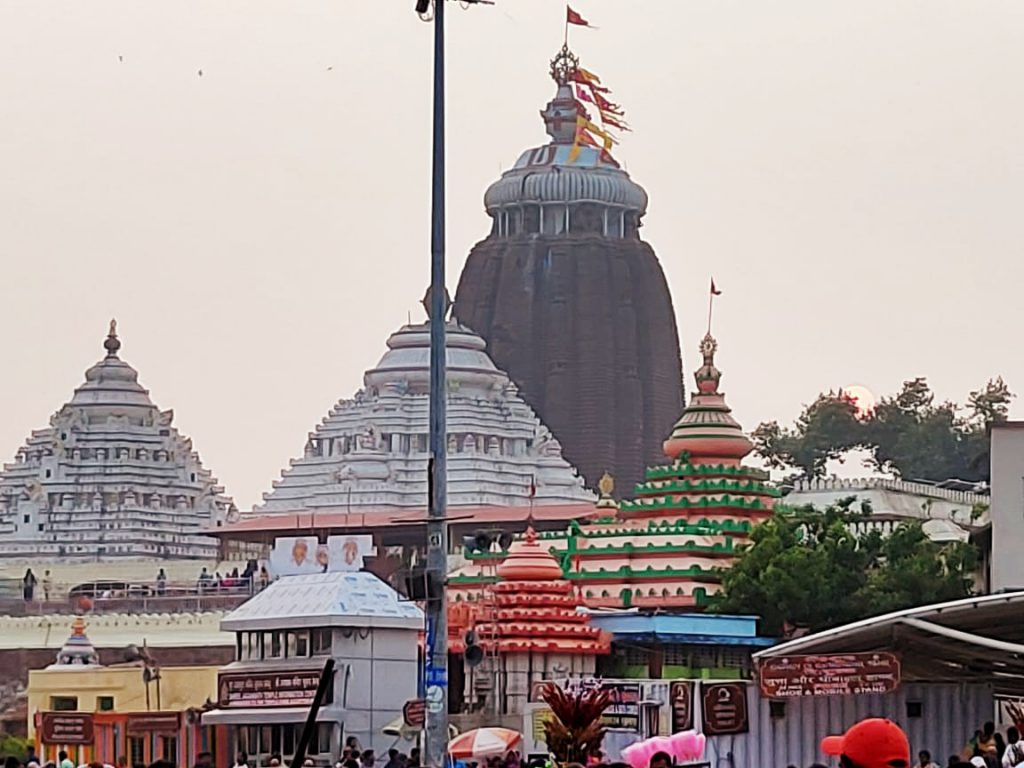
Inside the temple, the main sanctum houses the idols of Lord Jagannath, Balabhadra, and Subhadra placed on a grand wooden platform known as the Ratna Singhasan. Devotees come here to seek blessings, witness daily rituals, and enjoy the divine atmosphere filled with chants and conch sounds.
The most famous festival is the Rath Yatra (Chariot Festival), held annually in June–July. During this event, massive chariots carry the deities through Puri’s streets, drawing millions of devotees. You can also explore the Ananda Bazaar, where Mahaprasad is distributed, and the Nilachakra, the sacred wheel atop the temple spire. Don’t miss the evening arti—a soul-stirring experience that connects every visitor with pure devotion.
How to Reach Jagannath Temple
By Air: The nearest airport is Biju Patnaik International Airport (BBI) in Bhubaneswar, around 60 km from Puri.
By Train: Puri Railway Station is well-connected to major Indian cities like Delhi, Kolkata, and Chennai.
By Road: Puri is easily accessible via the NH-316 highway. Buses and taxis from Bhubaneswar and Cuttack run regularly.
Local transport options include auto-rickshaws, e-rickshaws, and cycle rickshaws. Most travelers combine the temple visit with nearby tour places in Odisha like Konark and Chilika Lake for a complete spiritual and scenic experience.
Puri is surrounded by several must-visit places to visit in Odisha:
•Konark Sun Temple (35 km) – A UNESCO World Heritage Site known for its chariot-shaped architecture.
•Chilika Lake (50 km) – Asia’s largest brackish water lagoon, famous for dolphins and migratory birds.
•Raghurajpur Heritage Village (15 km) – A crafts village where every home is an artist’s studio.
•Puri Beach – Ideal for sunrise views, camel rides, and local seafood.
•Gundicha Temple – The destination of the deities during Rath Yatra.
These destinations make Puri one of the most versatile tourist attractions in Odisha, blending spirituality, art, and nature.
Best Time to Visit & Travel Tips
The best time to visit Jagannath Temple is October to March, when the weather is pleasant and perfect for sightseeing. The Rath Yatra season (June–July) is a must-see if you wish to experience Odisha’s grandest festival, though crowds are massive.
Travel Tips:
•Non-Hindus are not allowed inside the main sanctum but can view the temple from the Raghunandan Library terrace nearby.
•Dress modestly and remove footwear before entering.
•Try the Mahaprasad served in the Ananda Bazaar—it’s both a meal and a blessing.
•Avoid carrying mobile phones or cameras inside the temple complex.
Suggested Itinerary
Day 1: Arrive in Puri → Visit Jagannath Temple → Explore Puri Beach → Try local seafood.
Day 2: Morning trip to Konark Sun Temple → Stop at Chandrabhaga Beach → Return to Puri.
Day 3: Visit Chilika Lake for dolphin spotting → Explore Raghurajpur Heritage Village.
Day 4: Depart from Puri after a sunrise darshan.
This plan blends spirituality, history, and scenic beauty—perfect for travelers exploring tourist spots in Odisha.
FAQ – Jagannath Temple, Puri
Q1. What are the temple timings / darshan hours at Jagannath Temple, Puri?
The temple generally opens early morning (around 5:00 AM) and remains open till late night (often up to 10:30 PM) for darshan. On many days, there are two sessions: morning till noon, and then evening after a break. However, timings can vary slightly during festivals or special occasions — always check in advance.
Q2. Is there a dress code for visiting the temple?
Yes. Visitors are expected to dress modestly. Traditional attire (saree, dhoti, kurta-pajama, salwar-kameez) is preferred over Western casuals like shorts or sleeveless tops. Also, you must remove footwear before entering the temple premises.
Q3. Can non-Hindus or foreigners enter the main temple?
No, non-Hindus (including many foreigners) are normally not allowed inside the sanctum. They can, however, view the temple from nearby vantage points — for example, from the Raghunandan Library roof or terraces.
Q4. Is photography / mobile phone use allowed inside the temple?
No. Cameras, mobile phones, and other electronic devices are strictly prohibited inside the temple premises (especially in the inner sanctum). Violators have been penalized in the past.
Q5. Does the temple close on any particular day or month?
The temple is open throughout the year, though some very special rituals may alter visiting hours. There is no known regular full closure for Hindu devotees, but the timings may shift during festivals or rituals.
Q6. Are there aarti rituals — when are they held?
Yes, the Jagannath Temple has multiple aarti / rituals during the day. According to temple yatra sources:
•Mangala Aarti / Dwarpitha around 5 AM
•Sandhya Aarti in the evening (approx. 3:30 PM)
•Pahuda Aarti or last ritual at night (around 9:00 PM)
Q7. Can one get a guided tour at the temple?
Yes, local guides are available on a payment basis inside or near the temple. However, ensure the guide is legitimate and recognized, and that they don’t encourage rule-breaking (e.g. entering restricted areas).
Q8. How many entrances/gates does the temple have, and what do they symbolize?
The Jagannath Temple has four gates in the four cardinal directions:
•Singhadwara (East / Lion Gate)
•Ashwa Dwara (Horse Gate / South gate)
•Vyaghra Dwara (Tiger Gate / West)
•Hathi Dwara (Elephant Gate / North)
Each gate is said to symbolise one of the four principles like Dharma, Knowledge, Renunciation, Prosperity.
Q9. What is Mahaprasad and where is it available?
Mahaprasad is the sacred food offering cooked in the temple’s huge kitchen and distributed to devotees. You can collect Mahaprasad in the Ananda Bazaar inside the temple complex.
Q10. Do non-devotees or people with mobility issues have facility support (wheelchairs, etc.)?
Yes, for senior citizens or those with mobility restrictions, wheelchair service is sometimes available. But it’s best to request in advance and check on the day.
Q11. Is there any refurbishment or heritage corridor work going on in the temple complex?
Yes, a Heritage Corridor (Shree Mandir Parikrama / SJHC) has been constructed to simplify the movement of devotees, offer better crowd control, and improve the surroundings.
Conclusion
The Jagannath Temple in Puri stands as a timeless symbol of devotion and culture. From its divine rituals to its architectural wonders, every corner of the temple speaks of Odisha’s glorious past and living traditions. As one of the most revered tourist attractions in Odisha, a visit here offers more than just sightseeing—it offers peace, purpose, and a connection with something eternal.
Whether you’re exploring tour places in Odisha for spirituality, architecture, or festivals, Jagannath Temple promises an unforgettable journey into the soul of India.
Recommended Tour
Related Blogs
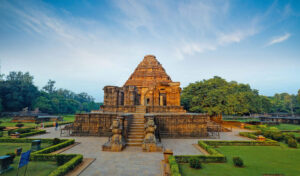
Konark Sun Temple – A Complete Guide to Odisha’s Timeless Sun-Carved Wonder
